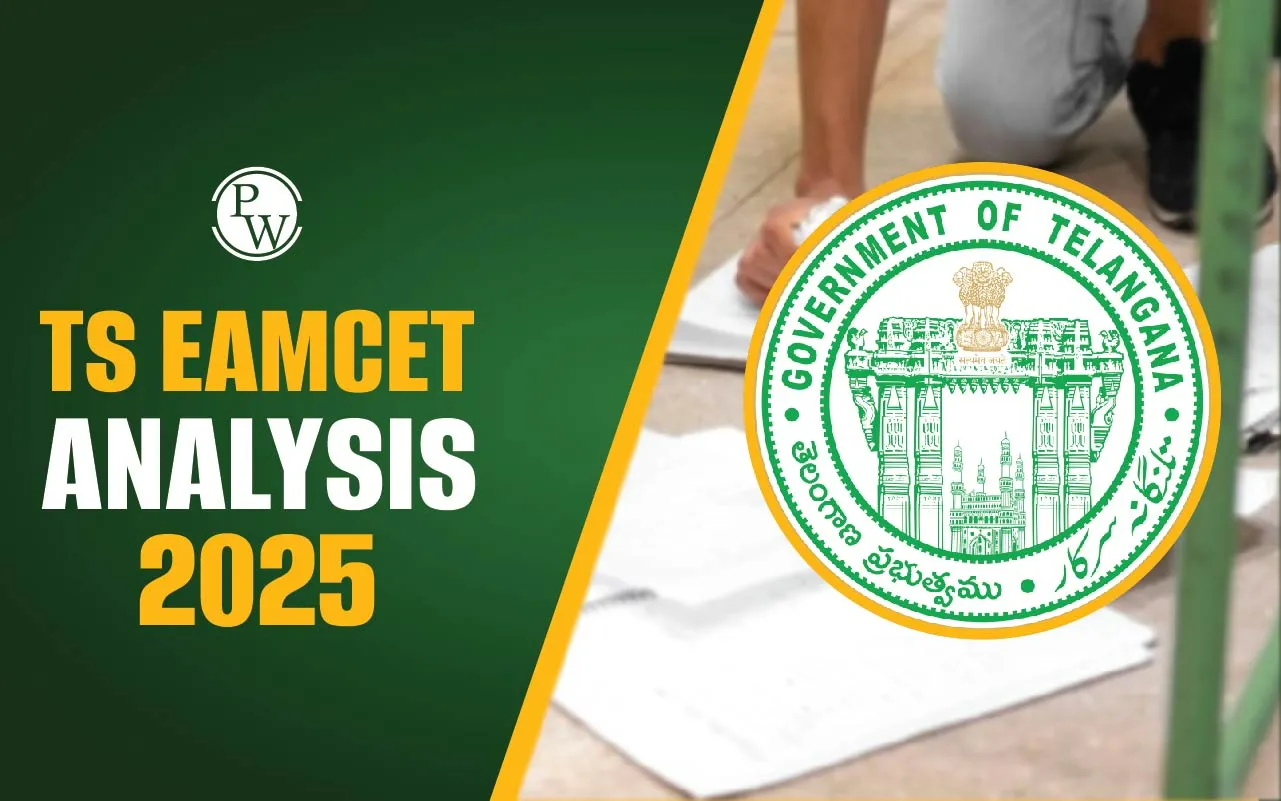
TS EAMCET Analysis 2025: Candidates can access the TS EAMCET 2025 paper analysis for all days and shifts here. The E stream and AM stream TS EAMCET 2025 exam analyses will also be available.
Candidates can learn about the exam's overall and section-specific difficulty level, the weight of questions on each paper, the number of good tries, and the anticipated TS EAMCET cutoff by using the exam analysis.
To compare their responses to the exam questions, candidates can also download the official TS EAMCET 2025 answer keys.
The Telangana State Engineering, Agriculture, and Medical Common Entrance Test (TS EAMCET) 2024 maintained its reputation as a moderately challenging examination.
Physics emerged as the most demanding section, requiring a deep understanding of concepts and problem-solving skills.
Mathematics, while lengthy, was of moderate difficulty, testing candidates' time management abilities. Chemistry was considered the easiest, with questions largely based on fundamental concepts.
Candidates aiming for top ranks needed to score between 150-160 marks, with a score of 112 typically corresponding to a rank around 1,000.
Effective preparation strategies included focusing on high-weightage topics, practicing previous years' papers, and taking mock tests to enhance speed and accuracy.
The TS EAMCET 2025 exam's difficulty varied across sections. We will provide the difficulty level soon, once it is available.
|
Subject |
Shift 1 Difficulty level |
Shift 2 Difficulty Level |
|
Physics |
Available Soon |
Available Soon |
|
Chemistry |
Available Soon |
Available Soon |
|
Maths |
Available Soon |
Available Soon |
The TS EAMCET 2025 question paper is anticipated to maintain a moderate difficulty level, consistent with previous years' trends. The exam will comprise 160 objective-type questions, distributed as follows: 80 questions in Mathematics, 40 in Physics, and 40 in Chemistry.
Each correct answer will yield one mark, with no negative marking for incorrect responses. Candidates can expect the Mathematics section to be moderately challenging and time-consuming, requiring efficient time management.
The Physics section is likely to present moderate difficulty, focusing on conceptual understanding and application-based questions. The Chemistry section is expected to be relatively easier, emphasizing fundamental concepts. Overall, thorough preparation and strategic planning are essential to navigate the exam effectively.
TS EAMCET Application Form 2025
The TS EAMCET 2025 cutoff marks are the minimum scores required for candidates to qualify for the counseling and admission process. For General category candidates, a minimum of 40 out of 160 marks (25%) is necessary to qualify. However, there are no minimum qualifying marks prescribed for SC/ST candidates.
The actual cutoff ranks for specific colleges and courses vary annually, influenced by factors such as the number of applicants, seat availability, and the exam's difficulty level. For instance, in previous years, top engineering colleges had closing ranks ranging from 500 to 25,000, depending on the course and category.
Candidates are advised to consult the official TS EAMCET website or specific college admission authorities for the most accurate and updated cutoff information. We will provide the detailed TS EAMCET 2025 cutoff information here once it becomes available.
Below, we have provided some of the factors that affect TS EAMCET Cutoff 2025 -
Number of Applicants – Higher competition leads to a higher cutoff.
Exam Difficulty Level – A tougher exam may lower the cutoff, while an easier one may raise it.
Total Seats Available – More seats result in a lower cutoff, whereas fewer seats increase it.
Previous Year Cutoff Trends – Past cutoff trends influence the expected range.
Performance of Candidates – Higher average scores push the cutoff higher.
Category of the Candidate – Reserved categories (SC/ST/OBC) usually have lower cutoffs than the General category.
Course and College Preference – Top colleges and high-demand courses have higher cutoffs.
Reservation and Quota Policies – State and college-specific quotas impact the cutoff marks.
